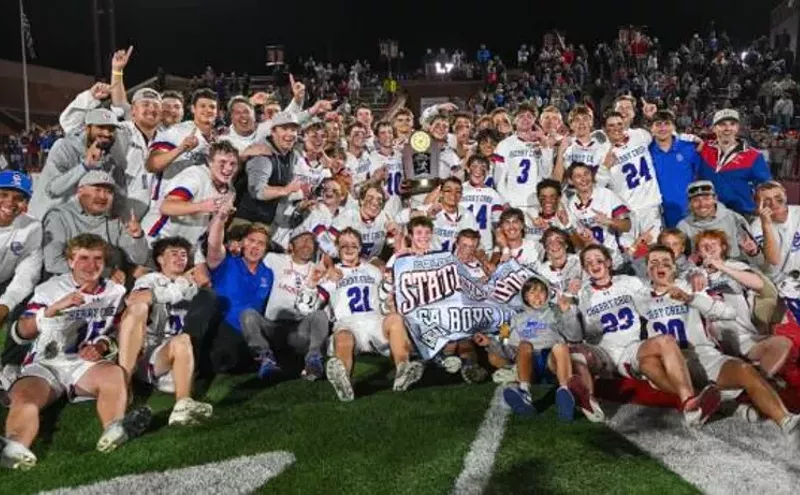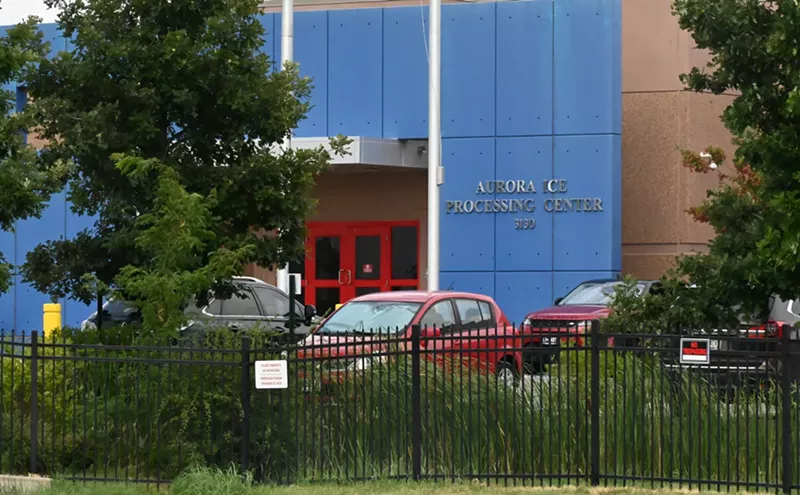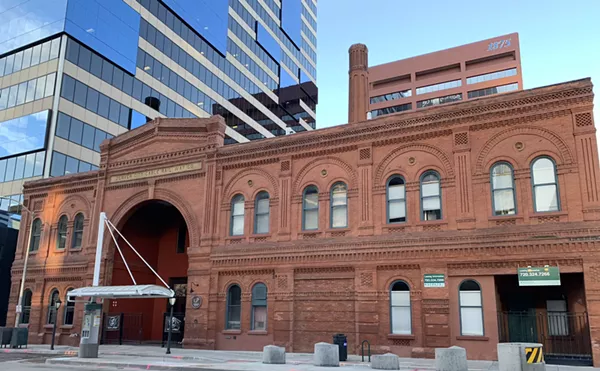Manzi should know. In addition to his Camera duties, he serves as the president and CEO of Prairie Mountain Publishing, an enterprise launched by MediaNews Group, owner of the Denver Post, and E.W. Scripps, whose biggest Colorado asset is the Rocky Mountain News. The Post and the Rocky aren't part of Prairie Mountain, though. Instead, the partnership oversees smaller local properties such as the Fort Morgan Times, the Akron News-Reporter, the Estes Park Trail-Gazette and, yes, the Colorado Daily, which began life in 1892 as a University of Colorado-Boulder student newspaper before becoming a rowdy, radical, independent and free daily in 1971. The Camera, which Scripps added to its portfolio in 1997, tried for years to run the Daily out of business, most recently with dirt, a no-cost, youth-oriented daily that was launched in August 2004 by Greg Anderson, Manzi's predecessor. (Anderson left the Camera at the end of June.) In the end, however, Scripps decided that the best way to eliminate the Daily as a threat to its bottom line was to purchase it. Shortly after the Daily joined the Scripps family in September 2005, dirt went to a weekly schedule, and its status as a standalone will come to an end shortly. Multiple sources say that Prairie Mountaineers seriously considered making dirt a once-a-week feature in the Daily -- the very paper it was created to destroy -- but in the end, the decision was made to simply kill the publication once and for all. According to a recent Camera article, dirt will die after its September 28 issue.
The irony of this situation can't be lost on Randy Miller, who saved the Daily from almost certain doom when he purchased it in 2001 and still serves as the paper's publisher and president. But rather than accept an invitation to crow, he ignored a passel of interview requests, just as he did when contacted by Westword about several other topics last year. (You're a shining example to hypocritical journalists everywhere, sir!) For his part, Manzi emphasizes that he's looking at doing more than simply sweeping away dirt. "We're going to look at all opportunities within all our publications," he says. "I don't think there'll be any sacred cows."
A Pennsylvania native, Manzi got his start in newspapering at the Wilkes-Barre Times Leader in 1983 and worked his way up to vice president of marketing before leaving in 1999 to take an executive position at Provo, Utah's Daily Herald. During his seven years in Provo, Manzi became the Herald's publisher and oversaw the acquisition "of all the weekly newspapers in Utah County except one," he points out. "We built a very solid and successful business unit, and the kind of strategic plan we put together for circulation, advertising, production and editorial is clearly something we'll undertake here."
At Prairie Mountain, Manzi envisions nurturing niche publications that target specific groups of readers (and specific advertisers interested in reaching them), as well as looking for ways to save bucks by combining efforts where possible. "Whenever you have a group like this one, it makes perfect sense to look at all the synergies that group ownership presents," he says. Manzi expects production, circulation and online divisions to be impacted, and while he notes that "editorial and advertising are generally kept separate," he reveals that "there are going to be some opportunities to do some things with combination ad sales and combination products. For instance, we've already started bundling classified advertising as an up-sell opportunity for consumers."
On the editorial side, "we might be able to share some opportunities that exist in sports and features," Manzi maintains. When asked if that could translate to the same article appearing in both papers, he says, "I think that's possible. But more likely, it would be an edited-down version in one and an enhanced version in the other."
Such possibilities turn the old Camera-Daily rivalry on its head even as they dilute the advantage for Boulderites of having two newspapers in their town. After all, multiple voices don't mean as much when they're saying the same thing. But Manzi refuses to be hamstrung by tradition, even when it comes to the Camera's editorial positions. Boulder's citizenry might be among the most ideologically progressive in the U.S., but, he says, "I don't think you ever want to paint a newspaper or an editorial board as either liberal or conservative -- and that's absolutely the way I will gently push the board."
Rumors suggest that some staffers may get a push, too, via buyouts or layoffs designed to reduce the size of the newsroom. Manzi declines to comment, but a moment later, he insists that he's looking to expand one major area of the Camera's operation. "We're going to use a lot of resources to significantly enhance the local reporting arm of this paper in particular," he says. "I think we're going to make this a dramatically better newspaper." He's just as optimistic about financial prospects, declaring that "newspapers are still an extraordinarily good business."
Maybe so. But they're no longer worth going to war over.
Racked again: No wonder so many publications are moving to the web. Not only are costs infinitely lower in cyberspace, but distribution is much simpler, particularly at a time when governmental entities are cracking down on where and how publishers can get their products in front of the public.
In recent years, Boulder and Denver have passed and instituted increasingly restrictive rules about newspaper boxes -- and in September 2005, Denver's Regional Transportation District followed suit. Nearly a year later, on August 21, RTD used these policies to justify the removal of wire racks at two of its most frequented stops: Market Street Station and Civic Center Station. These racks were used by virtually every major publisher in the city for newspapers, real estate guides and plenty more, and the pedestrian traffic volume guaranteed a high pick-up rate. Westword circulation director Curt Sanders estimates that he stocked approximately 1,000 papers over the course of a week at Market Street and nearly 400 more at Civic Center.
Scott Reed, RTD's director of public affairs, says the move was motivated by "continuing problems we had with access, egress, safety and litter." The two stations, which were constructed during the early '80s, "have exceeded the original estimates for capacity," he goes on, "and it became increasingly difficult for everyone. When you'd have people waiting for a bus, and some of them leaving the line to pick up newspapers and then cutting back in, inserts would fall out. I saw a person slip on one a few weeks ago. So we felt that a better solution long-term would be to provide more space for passengers getting on and off buses while at the same time ensuring that newspapers would be readily available outside the stations."
Indeed, spots have been earmarked for racks in the vicinity (at Civic Center, it's near the bus turnaround point), and RTD is sending letters to publishers letting them know that they can apply for permission to set up shop there. But because the placement is less immediate and convenient, the number of items grabbed is all but certain to tumble. It's the equivalent of setting aside a distant supermarket aisle for magazines and tabloids while banning them from placement by the checkout stands.
Granted, treating newspapers like trash makes a certain amount of sense on many days, but there is a difference. At least that's what I tell myself when I can't fall asleep at night.












